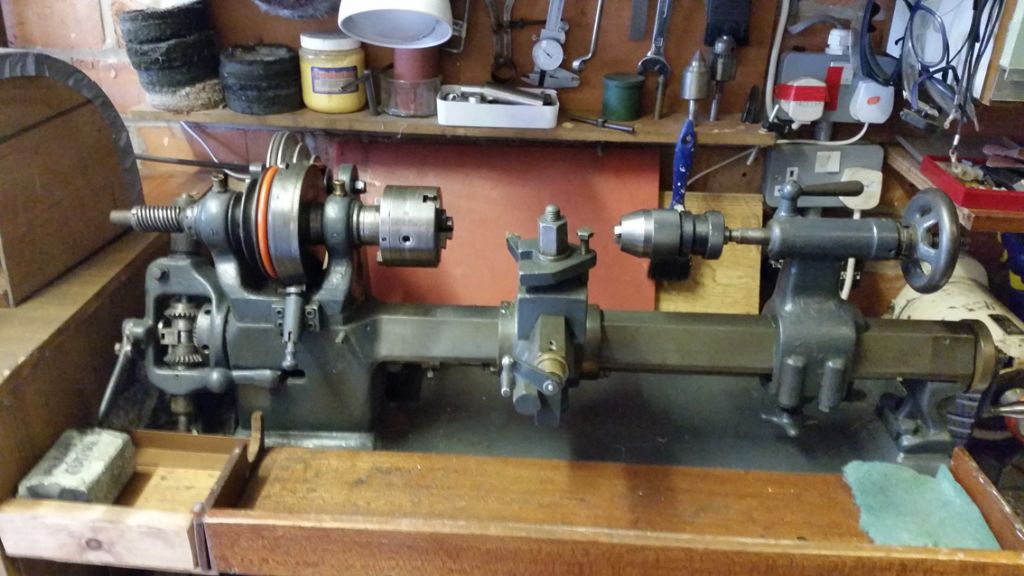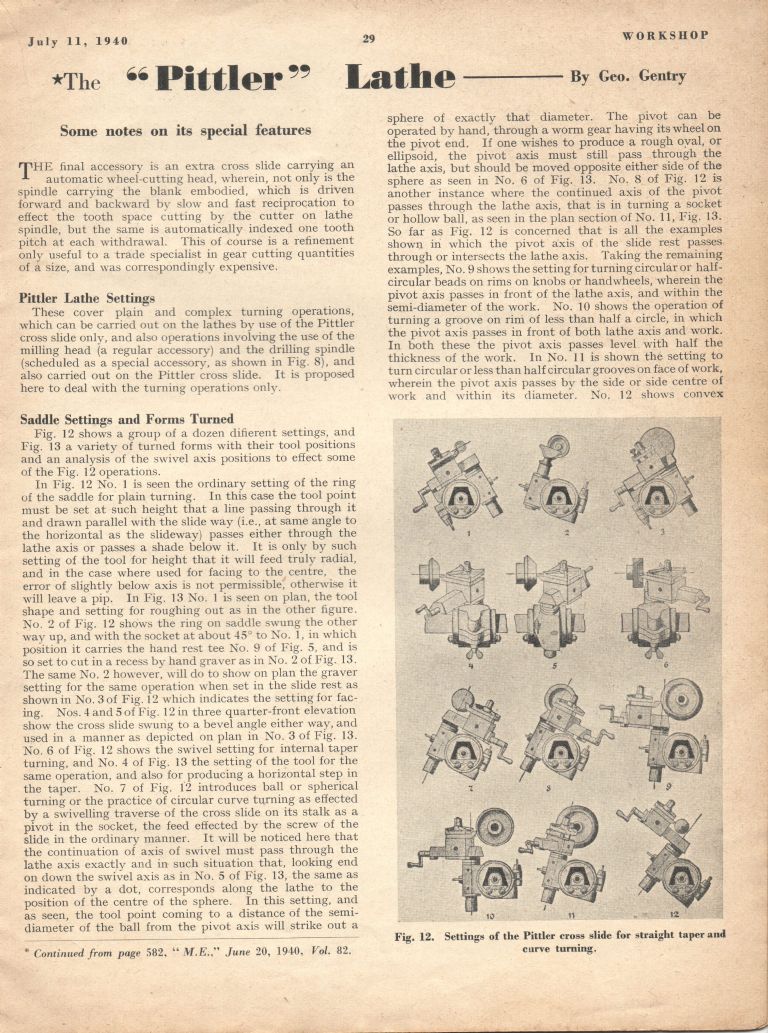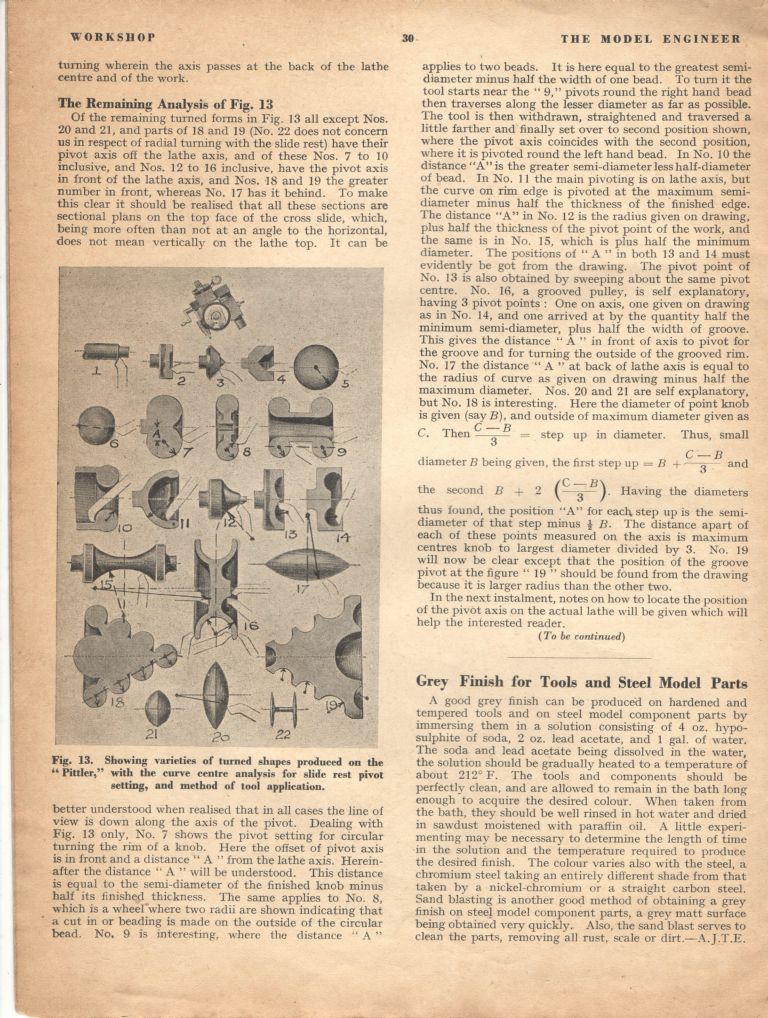Michael
Impressive indeed. Herr Pittler must have had a truly amazing ability to visualise not only the solid geometry of shapes but also their production by usefully simple manipulation of the tool approach angle. Previously I'd always thought that the rotating slide carrier capability of the Pittler was pretty much an exercise in being different for different's sake in an era before a generally satisfactory standard engineering metal turning lathe configuration had evolved.
That article makes it clear that the Pittler is more heir to the Ornamental Turning Lathe approach rather than the standard lathe whose evolution is clearly much more directly from the simple pole lathe. Ornamental turning is based on clever tool positioning to create complex shapes and the Pittler clearly follows the same reasoning. Albeit in the more robust form required for machined engineering components.
The skill and care needed in set-up to produce accurate work must have been considerable. Especially if another identical batch of components were needed later after the settings had been changed to do other jobs. Calculation of the settings can't have been trivial either in a world without calculators, log table or slide rules. Objectively a blind ally i machine tool evolution but an impressive one.
Fairly obvious how you get the 200 operations claim. Basically every class of shape counts as an operation. Neil's skepticism aside I think its a valid viewpoint as doing the more complex things on a conventional machine would need a raft of attachments and considerable numbers of accessories for said attachments. Or a CNC. Wonder how a Pittler style CNC would go.
Inherent tool height adjustment too. No shims or expensive QC systems needed.
Clive.
 JA.
JA.







